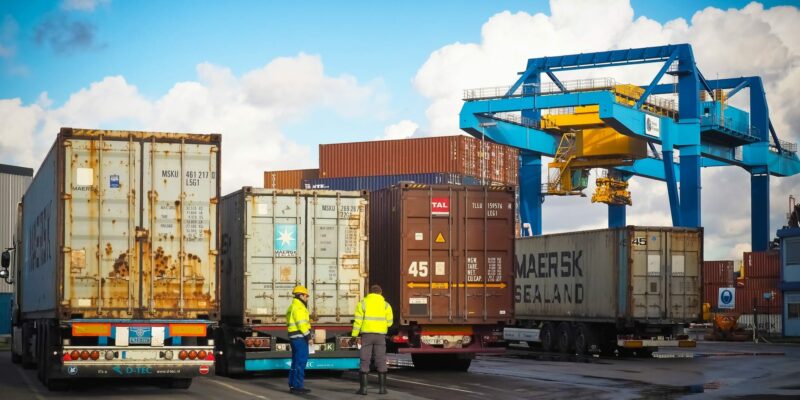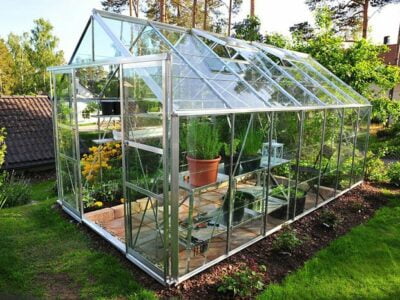In this article, we explore the environmental impact of repurposing shipping containers.
We delve into the life cycle of these containers,the sale of shipping containers, examining energy consumption and waste generation.
We also highlight the environmental benefits of repurposing and discuss potential hazards and contamination.
Additionally, we touch upon sustainable design considerations and various recycling and upcycling options.
Lastly, we look into future trends and innovations in container repurposing.
Join us as we uncover the sustainable potential of these versatile structures.
The Life Cycle of Shipping Containers
You might be wondering what happens throughout the life cycle of shipping containers. Well, let us take you through it.
It all begins with the construction of these sturdy containers, which are typically made of steel and designed to withstand harsh weather conditions and rough handling. Once built, they are loaded onto ships or trucks for transportation to their intended destinations.
During transportation, they may experience wear and tear, requiring regular maintenance to ensure their longevity. Shipping containers have a lifespan of about 10 to 15 years, depending on various factors such as usage and maintenance.
When they reach the end of their lifespan, they can be repurposed or recycled, minimizing their impact on the environment. Proper disposal methods are crucial to ensure that shipping containers are handled responsibly and sustainably.
Energy Consumption in Repurposing Shipping Containers
To reduce energy consumption when repurposing shipping containers, we recommend using energy-efficient appliances and LED lighting. Additionally, sourcing materials locally can help reduce transportation logistics and the carbon footprint associated with shipping.
Conducting a carbon footprint analysis can provide valuable insights into areas where energy consumption can be further minimized. Energy efficient modifications, such as adding insulation and using low-emissivity windows, can greatly reduce the need for heating and cooling.
Integrating renewable energy sources, such as solar panels or wind turbines, can further decrease energy consumption and reliance on traditional power sources. By considering these strategies and making conscious choices throughout the repurposing process, we can significantly reduce the environmental impact of repurposing shipping containers.
Waste Generation and Management
Waste generation and management can be improved by implementing recycling programs and properly disposing of any hazardous materials. By diverting waste from landfills and embracing a circular economy, we can greatly reduce our environmental impact.
One key aspect of waste reduction is exploring composting options. Instead of throwing organic waste into landfills where it contributes to greenhouse gas emissions, we can turn it into nutrient-rich compost that can be used to enrich soil and support sustainable agriculture.
Additionally, we should focus on eco-friendly disposal methods for non-recyclable materials. This might involve exploring innovative technologies that can convert waste into energy or exploring new ways to repurpose materials.
Environmental Benefits of Repurposing Shipping Containers
By embracing the circular economy and finding creative uses for old shipping containers, we can significantly reduce our carbon footprint and contribute to a more sustainable future. Repurposing shipping containers is not only a cost-effective solution but also has numerous environmental benefits.
By utilizing sustainable practices, such as using eco-friendly materials and renewable energy, we can transform these containers into eco-friendly structures. These repurposed containers can be used for various purposes, including green building projects like affordable housing, offices, and even schools.
Additionally, the modular nature of shipping containers allows for easy transportation and assembly, further reducing energy consumption. By repurposing shipping containers, we are not only reducing waste but also minimizing the need for new construction materials, ultimately leading to a more sustainable and environmentally conscious society.
Potential Hazards and Contamination
The potential hazards and contamination associated with old shipping containers should not be overlooked when considering their repurposing. Repurposing these containers may seem like a sustainable solution, but it comes with its own set of environmental risks.
One major concern is the presence of chemical pollutants within the containers. These pollutants can leach into the soil when containers are used as garden beds or for urban farming. This can lead to soil contamination and affect the quality of crops grown in these containers.
Additionally, the poor ventilation in repurposed containers can result in poor air quality, which may pose health risks to individuals working or living in them. Furthermore, if not properly waterproofed, these containers can contribute to water pollution by allowing contaminants to enter nearby water bodies.
It is crucial to carefully evaluate and mitigate these risks before repurposing shipping containers to ensure the well-being of both people and the environment.
Sustainable Design Considerations
After exploring the potential hazards and contamination associated with repurposing shipping containers, it is essential to consider sustainable design considerations.
When it comes to repurposing shipping containers, we must prioritize environmentally friendly practices. Material sourcing plays a crucial role in minimizing the impact on the planet. Opting for recycled or sustainable materials not only reduces waste but also promotes a circular economy.
Energy efficient construction techniques, such as insulation and solar panels, can significantly reduce the carbon footprint of repurposed shipping containers. Water conservation measures, such as rainwater harvesting systems and low-flow fixtures, can help minimize water usage. Incorporating natural ventilation strategies ensures a healthier indoor environment and reduces the need for energy-intensive cooling systems.
Lastly, biodiversity preservation can be achieved by integrating green spaces and native plants, creating habitats for local wildlife.
Recycling and Upcycling Options
When it comes to recycling and upcycling, we can explore various options to give new life to materials and reduce waste. Repurposing techniques allow us to transform old objects into something new and useful.
Creative transformations can turn discarded items into beautiful and functional pieces. Not only does this help in reducing landfill waste, but it also promotes resource conservation. By repurposing materials, we are able to extend their lifespan and minimize the need for new resources. This is not only environmentally friendly, but also cost-effective.
Additionally, the use of innovative designs in repurposing allows for unique and one-of-a-kind creations. Whether it’s turning old pallets into furniture or transforming glass bottles into decorative items, there are countless eco-friendly alternatives available for us to explore.
Future Trends and Innovations in Container Repurposing
As we look ahead, there will be exciting new ways to repurpose shipping containers. One of these trends is the integration of solar-powered solutions into container repurposing projects. By harnessing the power of the sun, containers can be transformed into sustainable and eco-friendly structures.
Another emerging trend is the use of containers for vertical farming. With limited land and growing urban populations, vertical farming offers a solution to produce food in a compact and efficient manner.
Additionally, containers are being utilized for modular housing, providing affordable and customizable living spaces. For those seeking a sustainable lifestyle, container repurposing offers opportunities for off-grid living.
Lastly, innovative architecture is pushing the boundaries of container repurposing, creating unique and visually stunning structures that challenge traditional construction methods.
The future of container repurposing is filled with endless possibilities.
Frequently Asked Questions
Are there any health risks associated with repurposing shipping containers?
There are potential health concerns when repurposing shipping containers, such as poor air quality due to lack of ventilation and the presence of toxic materials. Insulation options and safety precautions can help mitigate these risks.
How can shipping containers be repurposed to minimize their impact on the environment?
To minimize their impact on the environment, we can repurpose shipping containers through sustainable design, eco-friendly solutions, and upcycling options. This approach promotes green building practices and offers numerous environmental benefits.
Are there any regulations or guidelines in place for the repurposing of shipping containers?
There are regulations, guidelines, and building codes in place for the repurposing of shipping containers. These standards ensure safety measures are followed during the process to minimize any potential risks or hazards.
Can repurposing shipping containers help reduce carbon emissions?
Repurposing shipping containers offers sustainable solutions and eco-friendly alternatives. It helps reduce carbon emissions, benefiting the environment by lowering our carbon footprint. The environmental advantages of repurposing containers are significant and should be further explored.
What are some innovative ways that shipping containers are being repurposed for sustainable living?
We’ve seen some incredibly creative designs using shipping containers for sustainable living. They’re being used for off-grid living, community projects, sustainable architecture, and even emergency shelters. It’s amazing how versatile they can be!
Conclusion
In conclusion, repurposing shipping containers offers numerous environmental benefits. By extending the lifespan of these containers, we can reduce the demand for new construction materials and minimize waste generation.
Additionally, repurposing containers can help lower energy consumption and decrease carbon emissions associated with traditional building methods. However, it is important to consider potential hazards and contamination risks when repurposing these containers.
By incorporating sustainable design considerations and exploring recycling and upcycling options, we can further enhance the environmental impact of container repurposing.
Looking forward, future trends and innovations in this field hold great potential for creating a more sustainable and eco-friendly built environment.










Comments